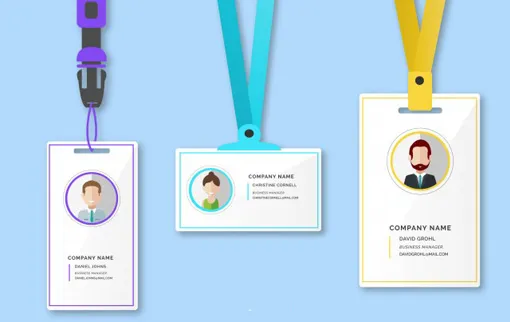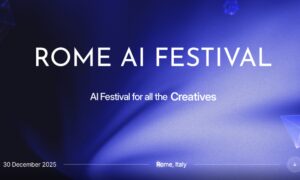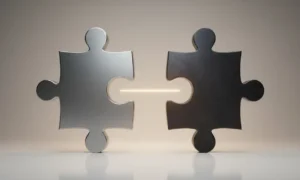When attendees walk into your event, their very first impression often hangs around their neck literally. A well-designed badge does more than identify someone; it speaks volumes about your brand, your attention to detail, and the kind of experience you’ve curated. In short, custom event badges aren’t just functional, they’re part of your event’s identity.
Whether you’re organizing a corporate conference, a trade show, or an industry summit, the right badge design can enhance engagement, streamline check-in, and even help drive connections.
Here’s how to design custom event badges that wow your attendees from the moment they arrive.
1. Understand the Purpose of Your Event Badge
Before you jump into design tools and layout ideas, take a step back to define what your badge needs to accomplish.
A truly effective badge should:
- Clearly identify the attendee and their role (e.g., speaker, exhibitor, VIP)
- Facilitate access control by indicating permissions or zones
- Support branding with event logos, colors, and themes
- Enable networking by showing names, companies, and roles clearly
- Provide functional integrations like lead retrieval or session scanning
In many events, badges double as security tools and data trackers. That’s why it’s important to think beyond aesthetics and ensure the design supports each layer of functionality.
2. Choose the Right Badge Format
Not all badges are created equal. The format you choose impacts everything from how attendees interact with the badge to how smoothly check-in and scanning work.
Material options:
- Paper: Budget-friendly and fast to print, ideal for one-day or casual events.
- Plastic or PVC: Durable and water-resistant, great for multi-day events and outdoor venues.
- Eco-friendly alternatives: Seed paper, recyclable plastics, and biodegradable materials align with sustainability initiatives.
Layout considerations:
- Single-sided badges work for small, short events.
- Double-sided badges ensure visibility when badges flip—especially useful in crowded networking environments.
Badge types:
- Lanyard-hung
- Clip-on
- Wristband
- Smart badge (RFID/NFC enabled)
Choose the format that suits your event duration, attendee flow, and brand values.
3. Prioritize Readability and Layout
Your badge might look great on screen, but will it be legible at a busy conference or a dimly lit gala?
To ensure clarity:
- Use bold, large fonts for first names—ideally 36–48 pt for visibility from 3–5 feet away.
- Maintain a hierarchy: Name > Company > Role/Title > QR Code or other elements.
- Avoid clutter. Use negative space and align elements logically.
- Use contrast—white text on dark backgrounds (or vice versa) to aid readability.
💡 Pro tip: Consider event lighting when finalizing badge colors. What looks good in natural light may be unreadable under blue stage lights.
4. Incorporate Branding Elements
A badge is prime real estate for subtle yet powerful branding. It should instantly convey your event’s identity and tone.
Elements to include:
- Event logo and tagline
- Color scheme that matches the event website, app, and stage design
- Fonts that are part of your visual identity
- Sponsorship placements (but avoid letting sponsors overshadow attendee info)
Try to make the badge feel like a natural extension of your event brand not an afterthought.
5. Add Personalization for Engagement
Personalized badges can turn a passive identifier into an active networking tool.
Ideas to personalize:
- Preferred name or nickname in bold
- Pronouns, printed subtly beneath the name or on a ribbon
- Role badges: “Speaker,” “Investor,” “First-Time Attendee,” etc.
- Color-coding: Use subtle background colors or badge holders to differentiate attendee types
These cues spark conversation, reduce awkwardness, and make people feel recognized and included.
6. Integrate Technology Smartly
Modern custom event badges should work hand-in-hand with your event tech ecosystem.
Key tech integrations:
- QR Codes or Barcodes for lead capture, session tracking, lunch check-ins, and gamification
- NFC or RFID Chips for touchless entry, sponsor booths, and session scanning
- Facial Recognition Pairing for seamless, secure check-in
All of these tools help automate logistics, reduce wait times, and collect meaningful event data. Just ensure your badge design leaves space for scannable elements and doesn’t interfere with their readability.
7. Design with Onsite Printing in Mind
Onsite badge printing is becoming the norm at professional events. It speeds up check-in, allows for real-time personalization, and reduces waste from no-shows.
Best practices:
- Use print-optimized templates that reduce heavy graphics or color blocks (which slow down printers)
- Align fields like name and QR code consistently across all badge types
- Design with margin guidelines to prevent cut-off elements
Solutions like fielddrive make this process easy, offering full-color, on-demand badge printing during check-in so you’re always prepared, even for last-minute registrants.
8. Test and Iterate Before the Event
Before you go live:
- Print samples to check colors, text size, and scanability
- Test QR/NFC functionality with scanners and mobile apps
- Ask for feedback from staff or trusted attendees
- Stress-test printers to avoid technical hiccups on event day
This process helps avoid errors like missing fonts, unreadable codes, or awkward layouts saving you embarrassment and reprints.
9. Think Beyond the Badge: Accessories & Holders
Badges don’t exist in isolation. Accessories impact usability and comfort just as much as design.
Common options:
- Lanyards: Choose branded, color-coded, or sustainable lanyards to match your event theme
- Badge Holders: Waterproof, matte, or anti-glare options protect and elevate badge appearance
- Ribbons or Stickers: Great for fun, networking, or role-specific highlights (“Speaker,” “Hiring,” “Ask Me About AI”)
These small extras enhance visual appeal and functionality without increasing your workload significantly.
10. Partner with a Reliable Badge Printing & Check-In Solution
You can have the best-designed badge in the world—but if it doesn’t print cleanly or isn’t ready on time, it can derail your entire check-in experience.
That’s why working with a platform like fielddrive is essential. fielddrive offers:
- Touchless, facial recognition check-in for ultra-fast entry
- On-demand, full-color badge printing with support for sustainable materials
- Real-time syncing with your registration and lead capture platforms
- Support across 50+ countries with logistics hubs in the U.S., Europe, Dubai, and more
With fielddrive, you can rest easy knowing your badge design is backed by event-day execution that’s fast, secure, and reliable.
Conclusion
Custom event badges may be small but they carry a big opportunity. With the right design, personalization, and technology, badges can enhance the attendee experience, support smooth logistics, and showcase your event’s professionalism from the very first interaction.
Take the time to design badges that do more than just look good—make them work harder for your event goals.
Want to bring this to life at your next event? Book a free demo with fielddrive and discover how effortless, high-impact badge design and printing can be.





























